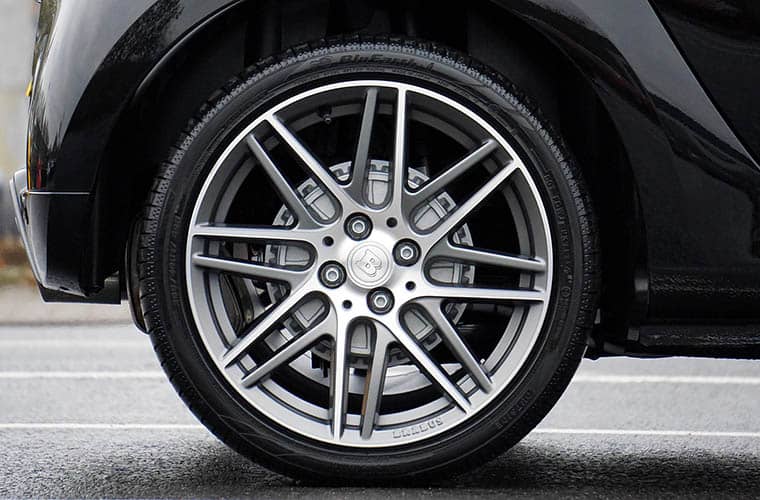Your tyres are one of the most important features of your car, for safety and performance. They’re the one thing that comes into contact with the road, helping your vehicle slow down and stop, as well as generate speed and handle bends. But, despite this importance, many motorists take little notice of the tyres they put on their car, and as a result of this lack of knowledge a few myths about car tyres have come about that need to be dispelled.
In this short blog post, we’ve busted 5 of the most common car tyre myths, some of which, if believed could cause serious safety issues, as well as performance problems, such as reducing acceleration rate, and increasing fuel consumption.
Whilst helping to improve the car's handling and stopping ability under certain conditions is a vital role of your tyre's tread, it also has two other important functions, including:

Dispersing water – This is to reduce the danger of aquaplaning, where your car is literally skimming across the water on the road's surface, therefore increasing skid risk, and impeding your ability to stop in time.
Reducing noise – Certain tyre tread patterns, such as asymmetric tread patterns with rigid tread blocks, are designed to specifically reduce interior and exterior noise levels, particularly on high-performance cars.
Although tyre tread depth under 1.6mm (the minimum legal tread depth in the UK) is a good indication that your tyres need replacing, it’s not the only tell-tale sign to watch out for. Other signs include:
Blisters, bulges or splits – If you notice any damage, such as blistering, bulging or splitting in your car's tyres, it means something is seriously wrong, and the tyres will need replacing as soon as possible. Tyre damage of this type happens for various reasons, such as curb collisions, or other poor driving techniques, but whatever the reason, by not replacing the tyres, you’re risking sudden blowouts and a loss of pressure.
The tyres are over 10 years old – Regardless of tread depth or condition, if your tyres are over 10 years old, it’s highly recommended that you replace them, due to the natural deterioration with age. To find out the age of your car's tyres, take a look at the sidewall markings following the ‘DOT’ symbol, which might read XXXXX2815, which would mean the tyre was manufactured in the 28th week of 2015.
Despite what the tyre manufacturer has imprinted on the tyre wall, it’s the vehicle manufacturer who decides the maximum and safest pressure (PSI) your tyres should be inflated to. To find out the PSI (pounds per square inch) of your particular make/model of car, either look for the information inside the driver's side doorjamb, in the vehicle's manual or simply ask your local car tyre specialist.
Whilst premium brand tyres, such as Michelin, Pirelli, Bridgestone or Goodyear will cost more, when fitted by a qualified and experienced tyre fitter, these tyres will give you more value for money than a budget tyre brand.
The reason for the price difference of premium brand tyres comes down to the investment the brand puts into the superior design and manufacturing of the tyre, as well as the safety testing, to ensure it's safe in all road conditions. But, that’s not to say there isn’t a place in the market for decent budget brand tyres, but just remember - you get what you pay for, and budget tyres although safe, will wear faster, and aren’t suitable for high mileage driving.
Whilst it might seem to make sense to put new tyres on the front wheels of the car, due to most cars being front-wheel drive and steering at the front, if you’re only replacing two tyres, it’s best to put them on the back wheels. The main reason for putting new tyres on the back wheels is because they provide more stability, so when driving in wet or slippery conditions, the back end of your car won’t lose grip and cause you to spin out of control.
Looking for a professional tyre shop in Leighton Buzzard? Then visit Jackson & Phillips, one of Bedfordshire’s leading tyre fitting and wheel alignment specialists, and suppliers of high-quality premium brands, and budget brand tyres.